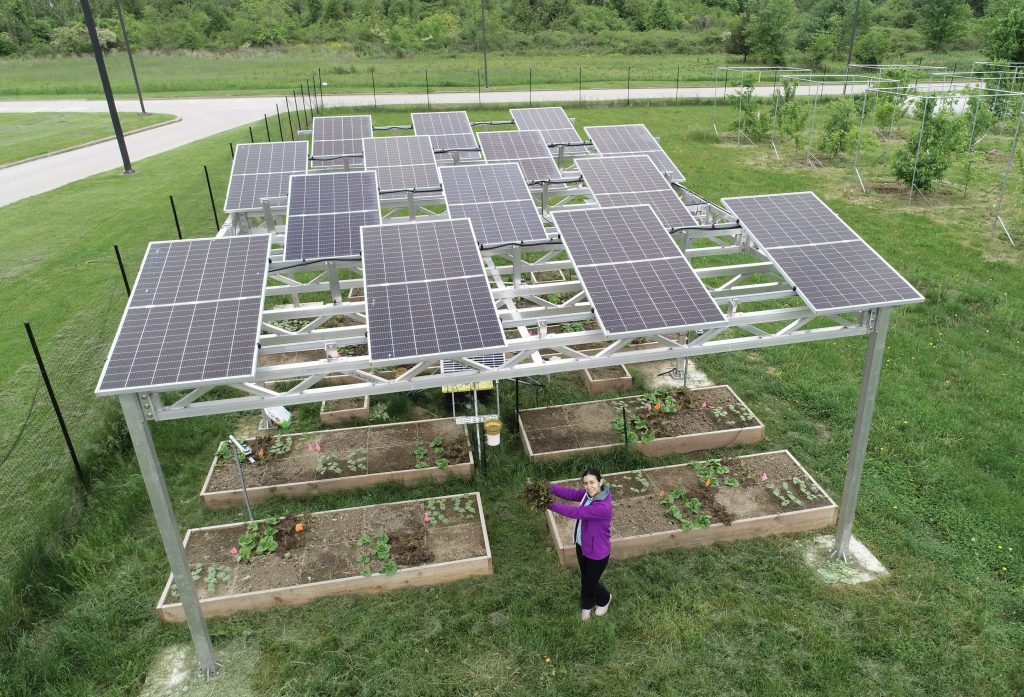Can the the implementation of agrivoltaics in vacant urban spaces provide additional environmental and socioeconomic benefits, including buffering heat stress, extending seasonal range limits of some crops, storm water management and the potential to address food deserts? Caroline Merheb‘s research is case in point. Our extensive sensor network monitors around 50 physical variables at the TU agrivoltaic test site, including multiple sensors to track the spatial and temporal distribution of light (direct, PAR, albedo), soil moisture, air/soil temperature, panel temperature, wind dynamics, and electricity generation

